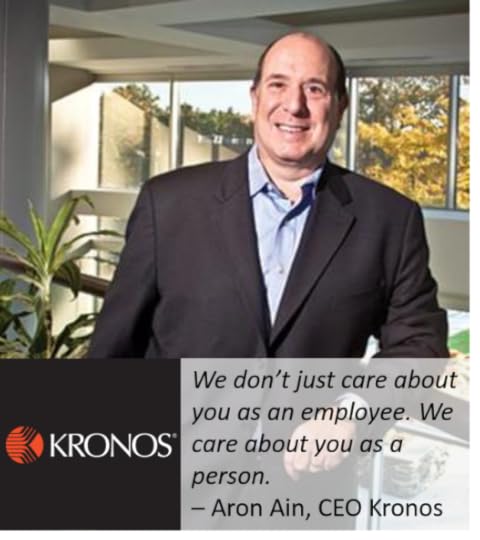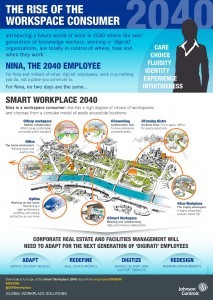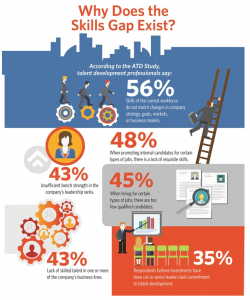Sharlyn J. Lauby's Blog, page 164
January 17, 2016
The Fine Line Between Confident and Cocky
We’ve talked a lot here on HR Bartender about the challenges in today’s recruiting market – competition for talent, increased time to hire, skills gaps, etc. But there’s one aspect that I want to mention – the confident candidate. William Tincup brought it up in a post titled, “7 Ways Recruiters Will Be Blindsided in 2016.” It’s a good read, be sure to check it out.
Item numero uno on the list was “candidate ego is out of control.” I agree with this…to a point.
Yes, the job market has shifted in the candidate’s favor. Yes, top talent knows they are top talent – they always have. Organizations need to understand that, if they want rock stars, they will have to pay for rock stars.
But I also believe there’s a fine line between confidence and cockiness. Confidence is a feeling of self-assurance in one’s abilities. Cockiness is showing confidence in a way that’s annoying to other people. Cockiness implies the person is egocentric rather than a team player. Their focus is often on their own success rather than that of the company. Organizations should hire people who are confident, not cocky. Candidates should convey to employers they are confident, not cocky.
Whether you’re a candidate or a company, there are a few ways to convey confidence:
Learn to listen well. Confidence isn’t about talking all the time. Confidence is about listening and responding in a thoughtful and genuine way. Both candidates and companies need to be able to listen.
Consider practicing mindfulness. It’s the practice of focusing on self-awareness. Confidence is about being self-aware and self-managing. Companies and candidates show self-awareness in their brand.
Understand both your strengths and weaknesses. Yes, it’s true in an interview situation, we try to steer the conversation toward our strengths. But it’s okay to talk about areas we want to improve.
Be prepared to talk about work successes and failures. Never before in business has failing at something been so acceptable. Candidates and companies should be open and transparent about their mistakes and achievements.
This conversation reminds me of the employees who are considered top performers but leave body bags all along the way. I’m not so naïve to think that there won’t be candidates who let their ego get out of control. But unless they are worth the collateral damage, then organizations will have to learn how to say no.
Companies might not be faced with this situation right now, but I can see this issue coming up at some point this year. The question is what would you do? And is it possible to avoid candidate egos with replacement planning, talent pools, or training programs? Instead of hiring confidence from the outside the organization, grow employee confidence from within.
Image courtesy of Sharlyn Lauby
The post The Fine Line Between Confident and Cocky appeared first on hr bartender.






January 15, 2016
Candidate Experience 2.0 [infographic] – Friday Distraction
Lots of talk about the candidate experience these days. Lots! Almost to the point where I wonder if we’re starting to tune the conversation out. And we certainly should not because the discussion is more important than ever.
I ran across a new term that intrigued me: Workspace Consumer. The idea is that workers will control where, how and when they work. I immediately thought of this as the next evolution of the candidate experience. We’re seeing the candidate driven market. Job seekers can find work opportunities the way they make informed consumer purchases. This infographic from Johnson Controls paints a great picture.
Granted, in some organizations, employees already have control of certain aspects of their work. The first thing that comes to mind is telework or telecommuting. But I think what we’re talking about here so much more than that. Not to mention that organizations like Great Place to Work and Glassdoor have the potential to be branded the “Consumer Reports” of work.
If you want to learn more about workspace consumers, check out the full (PDF) Smart Workplace 2040 report. I thought the concept of “trophy offices” wasn’t too farfetched. How many other concepts will we see in the not too distant future?
The post Candidate Experience 2.0 [infographic] – Friday Distraction appeared first on hr bartender.






January 14, 2016
Successful People Are “Givers”
I had the privilege of speaking at the Massachusetts Conference for Women recently. I was on a panel with Joyce Maroney, director of the Workforce Institute at Kronos; Sue Meisinger, former CEO of the Society for Human Resource Management (SHRM); and China Gorman, former CEO of Great Place to Work to discuss what it takes to create an engaging workforce.
Prior to our session, I had the chance to hear Adam Grant, professor at the Wharton School of the University of Pennsylvania and author of the book “Give and Take: A Revolutionary Approach to Success.” His talk was fascinating and focused on the relationship between success and our communications. Grant explains that there are basically three types of interactions:
Takers : These are people who get stuff and give very little in return. You know who these folks are – they’re famous for volunteering and not really doing anything.
Givers : These individuals help others with no strings attached. This doesn’t mean they are oblivious to Takers.
Matchers : This group creates a balance between what they give and take. Think of them as the “Karma Police.”
The question is, which one is the most successful? And by the title of this post, you know it’s the Givers. But the rationale is just as important as the answer.
Takers can have a modicum of success. They can rise to the top quickly but they can fall just as fast. And that’s because Takers eventually have to operate alone. Why? Because they’re Takers. Obviously, Takers aren’t going to work with other Takers – who would get the work done?! Matchers aren’t going to always work with Takers, because they don’t get anything in return. They will only tolerate the “taker” situation for so long.
So, Givers create their own success by surrounding themselves with other Givers and Matchers. Remember Matchers are happy to continue giving because they’re working with a Giver. By contrast, Givers try to weed out Takers. Givers aren’t doormats – they understand who the Takers are and create opportunities without them.
When given the chance to choose your team, who would you choose – Takers, Givers, or Matchers? Givers are the people that make others better at their own expense. While it’s possible they will struggle in the short run, Givers will succeed in the long run because they are focused on the big picture.
Image courtesy of Sharlyn Lauby
The post Successful People Are “Givers” appeared first on hr bartender.






January 12, 2016
Candidates Want to Work At the BEST Companies
(Editor’s Note: Today’s post is brought to you by our friends at Kronos , the global leader in delivering workforce management solutions in the cloud. The Workforce Institute at Kronos released the third book in its thought leadership trilogy aimed at developing and retaining a competitive and engaged workforce: It’s All About Bob(bie) – Strategies for Winning With Your Employees. Enjoy the post!)
Simon Sinek, author of the book “Start With Why” says that “Customers will never love a company until the employees love it first.” Totally makes sense. The question is, how do you get employees to love your company? Part of that answer is employee engagement. But the other part is hiring employees who have already started to fall in love with the company.

How can you tell if a candidate is falling in love with your organization? Well the interview goes something like this:
Manager: Why do you want to work here?
Candidate: Well, because you guys have a great culture.
Manager: How do you know that?
Candidate: I read it on Glassdoor.com
Today’s post isn’t a testimonial for Glassdoor.com but instead a testimonial for investing in your employment brand. We’ve talked before about candidates spending time researching companies before they even apply. But that was in the context of having a great career portal, which is still important. The other facet of candidates doing research about organizations before they apply is that no candidate wants to work for the 12th best company.
Candidates want to work for the top company in their field. Or the top employer where they live. Or the best place to work for benefits. Candidates want to work for companies that are a “best” at something. This isn’t a Millennial thing or a Boomer thing. Every candidate wants to apply at the best. Because every employee wants to work for the best.
One of the conversations I found fascinating during KronosWorks 2015 was while I was chatting with Aron Ain, CEO at Kronos Incorporated, about talent in the workplace. While organizational culture and employee engagement have always been important at Kronos and they regularly solicit feedback from their 4000+ employees, in the last two years they have gained a better understanding of the real impact that ratings on sites like Glassdoor have on their recruitment and retention efforts. It prompted them to really pay attention to what people were saying on these social platforms…and take action. Not because he wanted a 97% approval rating as a CEO (which he has and it’s very impressive) but because better hires produce better outcomes. And better outcomes benefit customers and the bottom-line.
Like many other industries, Ain commented that the technology world is changing. It’s not only about delivering great hardware or software. It’s about building customer loyalty and that comes from employees delivering excellent service. It’s important to Kronos that employees are proud of the company, as evidenced by their 90% ranking versus 68% for their competitive set. The Kronos culture is rated higher than the cultures of Netflix, Apple and Google. I asked Ain what he attributes the ratings. He said, “We don’t just care about you as an employee. We care about you as a person.”
The U.S. unemployment rate is 5%. But Ain noted that the unemployment rate for the type of worker they typically hire was 1-2%. The competition for talent is tough and the type of candidate Kronos wants to hire can be choosy, so ensuring the company is a best employer became a strategic goal.
On some level, it sounds so simple. Treat your employees like people and it lifts the whole company up. But a lot goes into that statement. Kronos is committed to offering employee and manager professional development, competitive compensation and benefits, and supporting the communities where their employees live and work. If you want to learn more about the Kronos culture, check out their careers page here.
Becoming a best employer isn’t about the accolades – granted those will come. Becoming a best employer is about a commitment to employees and customers.
The post Candidates Want to Work At the BEST Companies appeared first on hr bartender.






January 10, 2016
6 Abilities Every Employee Needs To Be Successful
In the past, I’ve written about the skills that every employee needs to possess. But what about abilities? Abilities are equally important. They are those qualities that we need in order to be skillful…and ultimately successful. Over the past year, I’ve heard some words come up frequently when it comes to the abilities that organizations are looking for in candidates and employees.

Agility is the ability to move quickly and easily. Today’s business environment is very fast-paced. Companies want employees who are able to keep up with the pace. This is also particularly true when it comes to change. Employees that are longing for the “good old days” might find themselves left behind.
Courage is the ability to do something that scares us. Never before has the business world been so accepting of making mistakes. Employees should be prepared to take educated risks and be held accountable for the outcomes. Courage also refers to standing up and speaking up when something isn’t right in the workplace.
Curiosity is the desire to learn. Organizations are putting employees in charge of their own career development. That means employees need to be curious about learning. Companies want to know that employees will be curious and take the initiative to learn how to do something on their own.
Resilience is the ability to recover from setbacks. This ties into courage. If you make a mistake, own up to it and move on. An increasing number of organizations are equating resilience with grit and perseverance – a sign that an employee will work hard to achieve their goals.
Stress-awareness aligns with resilience. Employees today need to understand their stressors and not look for someone else to monitor them. Employees should be aware of what causes stress and what they need to do to alleviate stress. In addition, companies will be looking for employees to be proactive and maintain proper stress levels before things reach burnout levels.
Technology enthusiast might be a term I made up, but it’s the ability to look for technology solutions – simple, scalable and effective solutions to problems. Yes, sometimes going old school makes a lot of sense. But companies today want employees to think in terms of current options (versus the way we’ve always done it.)
I see more organizations building into interviews some questions surrounding these abilities. They want to hear candidates tell stories about when they’ve used these abilities.
What was the last major change you dealt with at work? And how did you handle it?
Tell me about the last work task you completed that scared you a little.
When was the last time you went to your boss and asked to learn something? How did you decide what you needed to learn?
Tell me the last time you made a mistake at work. How did you handle it?
As the job market continues to get tougher, companies are going to consider candidates who might not have all of the qualifications for the position with the idea that they can help the new hire obtain the skills. But that is all predicated on the candidate having the right abilities.
Image courtesy of Sharlyn Lauby
The post 6 Abilities Every Employee Needs To Be Successful appeared first on hr bartender.






January 8, 2016
Skills Gap Negatively Impacting Business [infographic] – Friday Distraction
According to the latest white paper from the Association for Talent Development (ATD) Public Policy Council, organizations are turning down business because they don’t have qualified people to do the work. 87 percent of respondents said the skills gap was affecting business performance in the areas of customer service, growth and service delivery. I’m not sure that the challenge of finding qualified candidates is surprising, it’s been brewing for a while. But the statement that companies are turning down business as a result is, or at least should be, a wakeup call.
One of the things I found very interesting in the white paper was the distinction in defining the skills gap. We have a tendency to simply think of it as STEM (science, technology, engineering and math) but the paper also looks at the “middle skills gap” defined as those jobs that require more than a high school degree and less than a four-year college degree.
The other piece of the white paper that I found interesting was the conversation about why the skills gap is developing. Yes, it talked about emerging technologies and outsourcing, which commonly come up in the discussion. But also being cited are education gaps and on-the-job training opportunities, specifically in areas such as communication skills, supervisory skills and problem-solving. This supports the need for business to start developing talent internally. Not only does it help the organization fill their talent pipeline but it’s not as expensive has hiring externally.
You can download a copy of the full white paper titled “Bridging the Skills Gap: Workforce Development is Everyone’s Business” to get all the details. It’s well worth the read.
The post Skills Gap Negatively Impacting Business [infographic] – Friday Distraction appeared first on hr bartender.






January 7, 2016
6 Things I Learned Wearing an Apple Watch
After close to a year of vacillating about it, I finally have an Apple watch. Honestly, I wasn’t sure I needed it and I’m still not sure it’s a “must-have” accessory. But I can say it’s easy to wear and the data I’m starting to see from it is starting to make it more valuable every day.

In the month or so that I’ve had the watch, I’ve realized a few things. Some good and others…well, I’ll let you decide:
Realistic expectations are necessary. Getting this watch will not turn you into Jason Bourne, Chuck Bartowski or even Maxwell Smart. And it does take some getting used to. I haven’t worn a watch in years so I was concerned about wearing a watch again. But I did find it a relatively easy habit to develop. The secret for me was keeping the charger near the bed. First thing on in the morning (after my glasses, of course) and off right before bed.
The battery life is good. I do like that the Apple watch holds a battery charge well. I haven’t had a day yet where I’ve gone into power reserve mode. I’m not thrilled that I have to own a unique charger for it. Even though the charger is very easy to use. You know you can’t get away with only one charger…so one of my first purchases was a spare for travel.
The watch face is an important feature. I love that I can customize my watch face. And I can change my watch face depending on my mood or what I’m doing. The watch face I use most often has several indicators including my next calendar appointment, battery life, exercise status, etc. I was concerned that the indicators would be too small and unreadable but I haven’t found that to be the case. I can see the watch face being valuable during conference season – just look at my watch to see my next appointment.
It has the potential to disrupt wellness. I don’t believe we’ve seen the full capabilities of the Apple watch when it comes to health and exercise. I’m still getting used to all of the health data and, so far, I like it very much. Especially the standing goals feature. As someone who works from home, I’m really focused on standing at regular intervals. I get a little buzz on my wrist to remind me to stand up every hour. I’m amazed at the activity trackers that do not have this feature.
It’s travel friendly…to a point. I’ve taken a couple of trips with my Apple watch. Did not have to take it off at the security checkpoint and it did not beep in the metal detector. In the past, I’ve been asked to remove my activity tracker and had it beep, so this is a nice surprise. I also didn’t have to turn it off inside the plane. Some people might say that’s not surprising, but the Apple watch is more than just a watch. And we get asked to turn our phones and tablets off regularly. So, I wasn’t sure what to expect with the watch.
It’s still in the early adoption stages. Not every app is compatible with the Apple watch and on some level, I’m not sure every app needs to be. To get the full benefit of the watch, it needs to be “near” your iPhone, which is a somewhat subjective term. I can be on the other side of my house and still be close enough to my iPhone. However, I can take a walk around the neighborhood wearing the watch (without my phone) and it still has some functionality but not all functionality.
I still have some features I need to check out like using Siri for directions in my car, Apple Pay and Time Travel. If anyone is using them, let us know how you like them in the comments. My initial determination so far is that the Apple watch is good looking and an instant win with the face and exercise function. Only time will tell if future apps and upgrades add to its value.
Image courtesy of Sharlyn Lauby
The post 6 Things I Learned Wearing an Apple Watch appeared first on hr bartender.






January 5, 2016
Delegating Will Not Make You Dispensable – Ask #HR Bartender
I think today’s reader note addresses a very common management issue – delegating.
Hi Sharlyn. I’m an HR representative dealing with my first ever firing of a high level manager. My CEO believes we need to replace this manager but I don’t believe we do. This manager delegated his duties so heavily he made himself dispensable. Do you have any suggestions that would help me in this situation? Thank you. And I love your blog and Twitter!
First of all, thank you so much for the kind words. I really do love writing HR Bartender and answering great questions from readers.

I know firing someone isn’t an easy task. Even when an employee consciously doesn’t follow policy. In this case, I thought the idea of delegating one’s self dispensable raises a lot of questions. For example:
What is this manager doing all day? There are managers who delegate responsibilities they probably shouldn’t. I get it. But I’m not sure about delegating the entire job away. How long has the organization been allowing this manager to do very little work? Which brings us to the next question…
Did anyone speak to this manager? I’ve always been a fan of grooming your replacement. It’s possible this situation went a bit too far and the manager delegated a bit too much. The question becomes, did someone speak to the manager about their actions and give them a chance to correct the situation?
Did the manager’s actions improve or hurt results? Okay, so the manager has delegated their work…were employees able to complete quality work on time and within budget? Or did the work suffer? Now I guess if the employees are taking care of business and the manager isn’t doing anything, maybe that does justify asking if you really need the manager. But here’s my last point…
Delegation and abdication are two totally different things. Delegate means to entrust someone with a task. Abdicate means to abandon responsibility. Delegation is an important management skill. Managers who abdicate need to be held accountable for their actions.
Managers who delegate are not abandoning their responsibility to the team. They’re still there for their employees. And while that might not look like hands-on work, it is work. Important work. It’s hard work to teach employees how to do something and then let go. It’s a challenge to watch employees make mistakes and struggle. But it’s part of the learning process – for both the manager and the employee.
If we want employees to eventually take on positions of greater responsibility, we need to delegate. A lot.
I do believe that managers can abdicate themselves out of a job. Not sure that managers can delegate themselves out of a job. Because being an effective delegator is a job all by itself.
Image courtesy of Sharlyn Lauby
The post Delegating Will Not Make You Dispensable – Ask #HR Bartender appeared first on hr bartender.






January 3, 2016
Give Employees the Option of Donating Vacation Time
During this past holiday season, I spoke with several colleagues who were being “forced” to take their vacation time. You know how this works. Year-end is approaching. The finance department does not want a huge vacation accrual on the books. The policy says “use it or lose it.” So the manager says, “Start taking some vacation each week.”

According to a study supplied by the Northern California HR Association (NCHRA), over $65 billion is in limbo each year due to employees not taking their entire vacation accrual. This represents a total $224 billion liability for U.S. businesses. Their study indicated that on average $1,898 or 5.7 days per employee are unused with 48 percent of employees taking all vacation for use-it-or-lose-it hours.
I cannot emphasize enough how important it is for employees to take their vacation time. We need time to decompress and relax. It’s necessary for our well-being. But I also think it can be counterproductive to “force” people to take vacation time. I mean, how can someone really relax when they’re being forced to take vacation.
Organizations need to become more flexible and offer options when employees are approaching their vacation deadline date and have a few days left on the books. It’s great when organizations have put policies in place to allow employees to carryover vacation. Some companies will actually pay the time out. But if your company doesn’t do either of those things, instead of “forcing” an employee to take a vacation, maybe they can donate it to a worthy cause.
NCHRA shared with me an organization called We2o, a philanthropy platform that allows employees to donate vacation time to a designated charity. NCHRA is actually using this platform to give their employees an option to donate vacation time to the American Heart Association. I had the chance to chat with Michael Vo, founder of We2o, about the platform and its capabilities.
Vo explained that We2o offers employees the ability to donate excess vacation and paid time off (PTO) to nearly 1 million U.S. charities that are eligible for tax deductible donations. The other great facet to the program is that, along with the altruistic benefits to making a donation, employees do reap the financial benefit because their donation is tax deductible.
Yes, it’s important that we take a little time away from work. But, if circumstances don’t allow an employee to use up their paid vacation, it’s nice to see there are options besides “lose it”. We2o is still relatively new but if you’re looking for another option for employees to manage their vacation time, donating it could be a triple win.
Image courtesy of Sharlyn Lauby
The post Give Employees the Option of Donating Vacation Time appeared first on hr bartender.






December 29, 2015
5 Ways to Focus On Your Career in 2016
A recent study from LinkedIn says that job seeker numbers are at a four-year high. It makes sense. I’m hearing a lot more about employees feeling confident about making career related changes. Add to that, organizations are reluctant to make operational changes – hence engagement is at an 8-year low. It spells a recipe for movement in 2016.

But finding a new job – whether it’s an internal promotion/transfer or a change in companies – takes planning. You want to find the right opportunity. If you’re actively seeking a new role or considering making a change, I wanted to share some of the five most popular HR Bartender posts related to your career.
3 Signs It’s Time to Find a New Job
How do you know if it’s time to find a new job? This HR Bartender reader is struggling at work. Look for these 3 signs to see if you need a new job.
How to Negotiate Your Next Salary
Want to learn how to negotiate your next salary? This HR Bartender reader does. We go to the experts for their advice on getting the salary you want.
Defining Workplace Professionalism
What is workplace professionalism? It’s important for our career – we need to know what it is. Professionalism is defined in each organization’s culture.
8 Reasons Employee Well-being Must Be Self-Managing
Employee well-being has become an area of focus for HR professionals. But, organizations can’t just mandate well-being. Employees must self-manage it.
The Do’s and Don’ts of Talking About Your Salary
The way we interact with coworkers regarding pay issues speaks volumes about us. We want to show our professionalism when talking about salary.
Organizations are quick to say that employees need to own their career. I’m totally cool with that concept. It also means that organizations need to be prepared when employees take actions to improve their career. Employees are getting confident with their options. That’s great news for them now and in the year ahead.
Image courtesy of Sharlyn Lauby
The post 5 Ways to Focus On Your Career in 2016 appeared first on hr bartender.






Sharlyn J. Lauby's Blog
- Sharlyn J. Lauby's profile
- 10 followers







